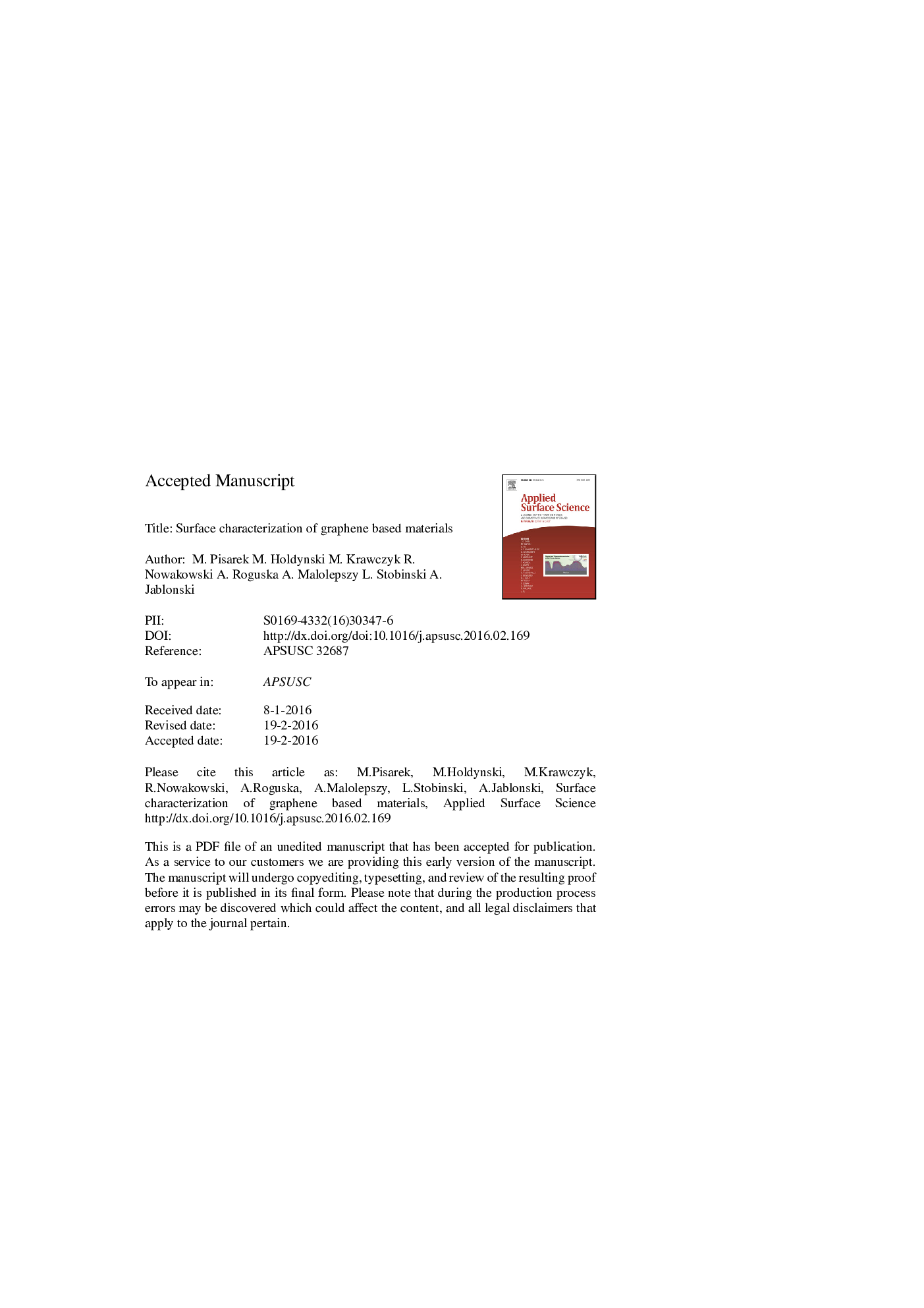| Article ID | Journal | Published Year | Pages | File Type |
|---|---|---|---|---|
| 5353428 | Applied Surface Science | 2016 | 28 Pages |
Abstract
In the present study, two kind of samples were used: (i) a monolayer graphene film with a thickness of 0.345Â nm deposited by the CVD method on Cu foil, (ii) graphene flakes obtained by modified Hummers method and followed by reduction of graphene oxide. The inelastic mean free path (IMFP), characterizing electron transport in graphene/Cu sample and reduced graphene oxide material, which determines the sampling depth of XPS and AES were evaluated from relative Elastic Peak Electron Spectroscopy (EPES) measurements with the Au standard in the energy range 0.5-2Â keV. The measured IMFPs were compared with IMFPs resulting from experimental optical data published in the literature for the graphite sample. The EPES IMFP values at 0.5 and 1.5Â keV was practically identical to that calculated from optical data for graphite (less than 4% deviation). For energies 1 and 2Â keV, the EPES IMFPs for rGO were deviated up to 14% from IMFPs calculated using the optical data by Tanuma et al. [1]. Before EPES measurements all samples were characterized by various techniques like: FE-SEM, AFM, XPS, AES and REELS to visualize the surface morphology/topography and identify the chemical composition.
Keywords
Related Topics
Physical Sciences and Engineering
Chemistry
Physical and Theoretical Chemistry
Authors
M. Pisarek, M. Holdynski, M. Krawczyk, R. Nowakowski, A. Roguska, A. Malolepszy, L. Stobinski, A. Jablonski,
